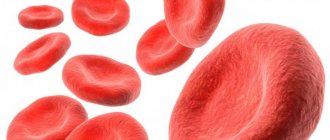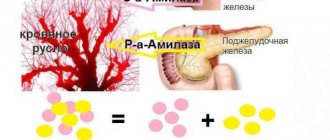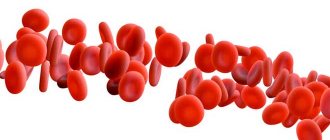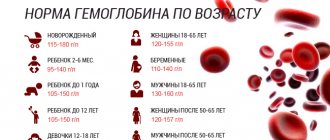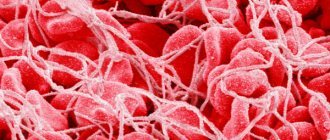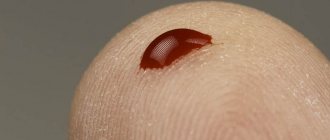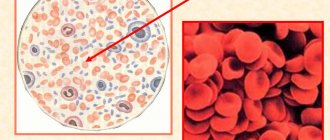A general blood test is a mandatory diagnostic procedure that every person who consults a doctor undergoes, regardless of the reason. To navigate the results of this analysis, it is important to understand what ICSU is. This indicator is an indicator and indicates the ability of the blood to perform one of its most important functions - breathing. If MSHC is elevated in a blood test, the reasons for this can lead to serious health problems.
Analysis
A complete blood count, also called a clinical test, provides information about red blood cells, white blood cells, platelets and hemoglobin. All these cells perform vital functions in the body. Hemoglobin, or Hgb, Hb is a substance of protein origin that is part of red blood cells and participates in gas exchange processes: it delivers oxygen to the cells of tissues and organs and takes CO2 from them.
The normal Hb level for adults is:
- men - 132-173 g/l;
- women - 117-155 g/l.
In children of different ages, this value varies from 90 to 150 g/l.
The amount of hemoglobin in red blood cells is a significant, but not the only index of the quality of the respiratory function of the blood. Along with it, experts evaluate the average concentration of Hb in erythrocytes (MCHC). This is an additional indicator included in a detailed blood test. Its determination requires special equipment.
MCHC in the blood should not be confused with another indicator in the analysis - MCH, which determines the amount of Hb in the red blood cell. If the first one speaks about the amount of hemoglobin in all erythrocyte cells, then the second one speaks about the Hb content in only one.
When is it recommended?
Mean erythrocyte hemoglobin concentration (MCHC) is important in confirming anemia. It is more informative than the number of red blood cells and the level of hemoglobin in the blood. With a normal or even increased content of red blood cells in the blood, the degree of their saturation with hemoglobin can be extremely low. In a detailed blood test, MSHC is necessarily present.
Also, determining this indicator is necessary in the case of:
- the presence of a constant inflammatory or infectious process in the body;
- suspicion of internal bleeding;
- suspected cancer;
- rapid fatigue.
How to prepare for analysis
Blood is a liquid medium of the body, the qualitative composition of which can change under the influence of a number of factors. In order for the analysis result to be as reliable as possible, a number of rules should be followed:
- The analysis must be carried out in laboratory conditions in compliance with all rules of asepsis and antiseptics.
- X-ray examinations are contraindicated before analysis.
- You should refrain from any physical procedures.
- Stop using medications. If this is not possible, inform your doctor.
- Limit excessive mental and physical activity.
- Refuse food and alcohol at least 10 hours before the procedure.
- Be sure to rest well before the procedure.
Important information: What does an increase in ESR according to Panchenkov mean in a blood test?
Blood is taken from a finger in the morning.
Blood test for mchc and other erythrocyte indices
To quantify the condition of erythrocytes, so-called erythrocyte indices are used, including the average erythrocyte volume (mcv), the average hemoglobin content in an erythrocyte (mch) and the average erythrocyte hemoglobin concentration (mchc). Analysis of erythrocyte indices allows you to determine the type of anemia. Because red blood cell indices are sensitive to therapeutic effects, they are also used to assess the effectiveness of treatment.
Determination of erythrocyte indices is part of a general blood test, which is prescribed both prophylactically and during the course of the disease or before surgical interventions.
Analysis transcript
MCHC displays the average Hb content in erythrocytes. It can be calculated using the formula: (Hgb / hematocrit) x 100.
Hematocrit is the ratio of blood cells to plasma. It is determined in any general analysis and its normal value is 39-49%.
The average hemoglobin content in red blood cells is not a constant value; it varies depending on age and environmental conditions. MSHC is elevated in infants and varies greatly throughout growth. The MCHC value in the analysis also differs between men and women.
Norm
Indicators depending on age and gender:
| Age | Norm MCHC, g/l |
| 0-2 weeks | from 280 to 350 |
| 2 weeks - 1 month | from 280 to 360 |
| 1-2 months | from 280 to 350 |
| 2-4 months | from 290 to 370 |
| 4 months - 1 year | from 320 to 370 |
| 1-3 years | from 320 to 380 |
| 3-12 years | from 320 to 370 |
12-15 years
|
|
15-18 years old
|
|
18-45 years old
|
|
45-65 years
|
|
Over 65 years old
|
|
Deviation
If a blood test shows that the average concentration of hemoglobin in a red blood cell is increased or decreased, and these deviations from the norm are large, then this may indicate a disease and requires additional examination to make a diagnosis and prescribe treatment.
Only a doctor can correctly interpret laboratory results. The MSHC assessment should be carried out in conjunction with other blood parameters: red blood cell count, Hgb, hematocrit, color index, etc.
Important information: What is the leukocyte blood count and what is it needed for (table of decoding norms for adults)
Importance for the body
By this English abbreviation, clinicians mean the erythrocyte index. It displays the average saturation of red blood cells with protein components - hemoglobin.
This is an important biological indicator that allows timely diagnosis of pathologies of hemostasis, cardiovascular system and other functional systems of the body.
MCHC in a blood test is reduced extremely rarely for natural reasons. This is usually an alarming signal that indicates the development of systemic pathologies associated with impaired hemoglobin synthesis.
To study a laboratory indicator, not the entire blood mass is used, but only the erythrocyte fraction isolated from it. The study allows us to evaluate the biochemical and physiological activity of formed cells.
The MCHC parameter provides information about the saturation of erythrocytes with protein compounds responsible for the transport of oxygen and iron ions. Deviation from the norm in any direction is a good reason for prescribing an additional examination.
A decrease in the erythrocyte index indicates:
- dysfunction of the endocrine glands;
- liver diseases;
- autoimmune pathologies;
- endocrine disorders;
In adult patients who receive a balanced diet and do not have malfunctions in the functioning of organs and functional systems, the hemoglobin content in red blood cells is always within the established limits.
Varieties of this parameter are MVC and MCH. They display the level of protein concentration in cells. MVC shows the average content of erythrocyte blood fragments.
In the laboratory report it is designated in cubic micrometers or femtoliters. An equally clinically important type of erythrocyte index is MCH. This parameter displays the average distribution of hemoglobin in each individual red blood cell studied.
It is important in determining the ability of red blood cells to transport oxygen. These indicators are indicated in the results of an extended biochemical blood test and are assessed comprehensively.
MSHC provides general information about the state of hemostasis, and MVC and MCH clarify it and allow you to determine the functional parameters of each cell involved in the transfer of oxygen and iron.
Why is MCHC low in a blood test?
When the saturation of red blood cells with hemoglobin is low, the MCHC indicator is reduced - this is hypochromia. It appears in many diseases of the blood and internal organs.
If the average hemoglobin concentration in red blood cells is reduced, the reasons for this may be the following:
- Iron-deficiency anemia.
- Sickle cell anemia.
- Immature forms of red blood cells.
- Damage from toxic substances.
- Blood loss.
- Hemoglobinopathies.
- Hereditary predisposition.
When the normal number of red blood cells and Hg are determined simultaneously with a decrease in MSHC, this may indicate an error made during the study, and it must be repeated.
Prevention and prognosis
To avoid any problems with the content of the main component of red blood cells, it is necessary to follow several simple general rules of prevention, in particular:
- lead a healthy lifestyle;
- eat well;
- use personal protective equipment when working with chemicals or toxic substances;
- take medications only as prescribed by a doctor;
- often be in the fresh air;
- avoid physical and emotional fatigue;
- undergo a full laboratory and instrumental examination at a medical institution several times a year, which will allow you to identify any of the underlying diseases at an early stage.
When the concentration of hemoglobin in a red blood cell is decreased or increased, there is a possibility of developing complications from the provoking disease, which dictates the prognosis.
High level reasons
An increased value of the average Hb concentration is rare, but also indicates the occurrence of a pathological process.
MSHC can increase in both adults and children with the following pathologies and conditions:
- B12 deficiency anemia.
- Hemolytic anemia.
- Decreased thyroid function.
- Diabetes.
- Malignant tumors.
- Taking medications, such as hormonal drugs.
- Violation of water and electrolyte balance.
- Chronic oxygen starvation.
MCH in a blood test: decoding, MCH norm in children and adults
Knowing the MSN in a blood test, a discrepancy with the norm, a shift in any direction, it will not be difficult for the doctor to suggest a probable diagnosis, the degree of development of the disease and exclude pathological changes. Having the result in hand, the doctor receives a complete picture of the possible causes that provoked the imbalance of the formed elements.
If you complain of poor health, weakness, hyperthermia and other signs of discomfort, the therapist prescribes a general blood test - an indicative way to establish a diagnosis. Each number in the results has its own acceptable limits and deviations are an alarming sign.
What does MCH mean?
Having recorded picograms of MCH, it is possible to determine the content of average hemoglobin in the blood structure. Violation of permissible limits consistently leads to transformation in bone marrow cells and red blood cells. To understand what exactly provokes a change in blood composition, it is worth finding out what MSI is.
Analysis - records the hemoglobin content in the red blood cell. The final figures are calculated using the formula, dividing the total hemoglobin by the resulting volume of red blood cells.
Within acceptable limits, data is limited to 24 - 35 picograms. For children of different ages, the values may differ.
A discrepancy in MCH values occurs under the influence of various factors, which has an impact on the average blood CP value. It is the result obtained that is the basis for diagnosing anemia.
Indications for analysis
The study of material for MCH and MCHC is usually not carried out to determine only this indicator. The significance is paid attention to when undergoing laboratory blood tests, along with others.
Doctors often prescribe a complete blood count to check for MSI in patients with signs of anemia, especially in the acute period.
The situation is quite serious, since loss of strength and lack of vital energy have a negative effect on the usual way of life, physical and psycho-emotional health.
Sometimes it is enough to make some adjustments to the way of life, change gastronomic habits in order to positively affect the functional processes in the body.
Normal indicators
To obtain accurate data and decipher a blood test for MCH, doctors use tabular data with prescribed norms of the erythrocyte index for different ages. According to the MCH norm, deviations are determined and a provoking factor is found that disrupts natural processes in systems.
Hemoglobin in the blood is a variable unit and it changes throughout the life cycle. It differs depending on gender type, and the difference is significant in children and adults.
Comparing the MCH rate in a blood test at different stages, the following is noticed: the maximum numbers are recorded in children at birth - 30 - 37 picograms. At one year of age, the values decrease to 24 – 30, and in adolescents – 26 – 32. Having crossed the 15-year mark, normal values vary between 26 – 34.
If pathological changes do not bother you with symptoms and are not detected at all, with the onset of 18 years, the permissible limits do not change until the age of 65.
Acceptable MCH standards in adults
The MCH indicator in a blood test is considered in a general context, together with other components, and is practically not prescribed separately.
AGE/YEAR HEMOGLOBIN CONTENT IN 1 ERYTHROCYTE MSN/PICOGRAMS
| Men | 15 — 18 | 27, 0 – 32, 0 |
| 18 — 45 | 27, 0 – 34, 0 | |
| 45 — 65 | 27, 0 – 35, 0 | |
| 65 -120 | 27, 0 – 34, 0 | |
| Women | 15 — 18 | 26, 0 – 34, 0 |
| 18 -45 | 27, 0 – 34, 0 | |
| 45 — 65 | 27, 0 – 34, 0 | |
| 65 — 120 | 27, 0 – 35, 0 |
Normal MCH in adolescents
ADOLESCENT CATEGORY AVERAGE HEMOGLOBIN CONTENT IN 1 ERYTHROCYTE MSN/PICOGRAMS
| Children 9 – 15 YEARS OLD | 26 — 32 |
Normal MCH in children
CHILDREN OF DIFFERENT AGES HEMOGLOBIN CONTENT IN 1 ERYTHROCYTE MCH/PICOGRAMS
| 1 day from birth | 30, 0 – 37, 0 |
| 1 month | 27, 0 – 34, 0 |
| Six months | 24, 0 – 30, 0 |
| Year | 22, 0 – 30, 0 |
| 16 years | 25, 0 – 31, 0 |
| 7 – 12 years | 26, 0 – 32, 0 |
How to prepare for the examination
Any laboratory blood test is performed on an empty stomach.
https://www.youtube.com/watch?v=23S96rk_gt0
The distance between eating food and pricking a finger is maintained from 8 to 12 hours, and also:
- per day, you should give up alcohol-containing drinks;
- It is worth excluding coffee and tea;
- before the procedure it is necessary to refrain from physical activity and psycho-emotional shocks;
- It is recommended not to smoke 30–60 minutes before the procedure.
The correct decoding of MCH can be the starting point in establishing a diagnosis and compliance with the rules must be approached with the utmost seriousness.
How is the analysis carried out?
Blood monitoring for MCH and MCHC is carried out in the same way as a general analysis - after taking material from a finger. The manipulation does not take much time and there is practically no discomfort. By observing all preparatory measures and requirements for the procedure, the most accurate result is obtained.
How MCH is calculated - decoding the results
Erythrocyte indices MCH, MCHC are deciphered as follows:
- MCH - pg - the presence of hemoglobin in the erythrocyte on average (23 - 31 pg);
- MCHC - g/l - degree of filling of an erythrocyte with hemoglobin.
The second indicator is stable, therefore, if it deviates, it is worth excluding instrument error.
Why is MCH elevated in a blood test?
An increase in the concentration of hemoglobin in an individual red cell leads to an increase in MCH - the color indicator rises by 1.1.
Changes are recorded in fairly serious pathologies, which has a logical explanation.
You should also know that when the MCH rate in children at birth is higher than normal, then by adulthood the indicators may stabilize and not cause concern. At the same time, if MCH is elevated in an adult, then this is a serious signal from the body about the onset of pathological processes.
Anemia
In the vast majority of cases, hyperchromic and megaloblastic anemia lead to transformation. Oversaturation of Hb and the formation of voluminous cells cause an abnormal change in the transport function of the blood.
Excessive accumulation of hemoglobin disrupts the movement of blood in the small vessels of vital organs, which negatively affects functional activity.
The cells are modified, are not considered complete and die faster than expected.
Hypothyroidism
Thyroid hormone in low concentration inhibits the functionality of the bone marrow, which promotes an increase in hemoglobin concentration, and accordingly increases MCH levels.
Oncological diseases
Pathologies of the red bone marrow, digestive organs, and lungs consistently lead to changes in red blood cells and to the fact that MCH in the blood test is increased.
Liver pathologies
Protein molecules are produced in liver cells. With cancer and hypertrophy, their synthesis increases. Due to the high content of red blood cells, the Hb volume and color index increase significantly.
The frequency of cases is predominant by gender - women are diagnosed less often than the stronger sex. If a deviation in MCH values is detected in the blood test of a child or adult, leukemia is most often diagnosed.
Cancer diseases increase the index tenfold.
Fluctuating numbers upward is an indicator that the blood is trying to correct the situation and performs its functions to the best of its ability. It's worse if the MCH value is lowered.
Why is MCH low in blood tests?
If the average hb content in the erythrocyte is reduced, this suggests a diagnosis of hypochromic anemia. Mostly the situation is aggravated by a lack of iron in the blood structure. Usually hemoglobin is not accepted by the body due to pathological changes in organs and systems:
- inflammatory process;
- dysfunction of metabolic processes;
- hypovitaminosis;
- lead poisoning.
A reduced MCH in a blood test has a detrimental effect on biochemical reactions and negatively affects the patient’s condition. The clinical picture is clearly expressed and creates significant discomfort.
Iron deficiency
A decrease in MCH MCHC in a blood test is often associated with a loss of iron concentration.
When the reading is less than 5 mg, doctors look for the cause in internal bleeding, diseases of the digestive system, and an unbalanced diet. Lack of iron leads to unprofitable hemoglobin production.
Iron deficiency anemia is predominantly diagnosed in women due to the characteristics of physiological development.
Hereditary pathologies
A decrease in MCH in children indicates pathologies of a hereditary type. During the development of the disease, the synthesis of structural elements of hemoglobin is disrupted. Hb, which carries alpha protein chains, leads to hypoxia of blood cells, as oxygen delivery is disrupted. The disease is diagnosed from the first months of life, which allows urgent measures to be taken.
Vitamin B6 deficiency
Adermin is involved in metabolic processes and is part of the enzymes that synthesize valuable amino acids. Its importance in fat metabolism is undeniable.
In its natural state, its amount should be 2 mg, but the value tends to fluctuate.
If the concentration of the substance is disturbed in the bone marrow, then the process of building Hb polypeptide chains subsequently changes - the reason for low MSHC and MCH. The condition is more often observed in the fairer sex.
How to stabilize MCH performance?
To restore the correct indicators, it is necessary to reconsider the usual way of life and pay attention to eliminating the root cause.
To increase the body’s resistance to diseases, it is necessary to lead a healthy lifestyle, introduce moderate physical activity, and control the psycho-emotional state.
You can have a positive effect on your blood composition by including healthy foods rich in nutrients in your diet. A properly formulated diet includes essential amino acids and molecular iron in the required volumes.
Pomegranate, liver, apples, seafood should be present in every family's food basket.
During pregnancy, the body experiences a double load, therefore, it is important to strengthen the diet with healthy foods. In addition, you should take multivitamins.
Monitoring of MCH in the blood is carried out throughout the entire life cycle so as not to miss a serious pathology.
Treatment of serious abnormalities
If an increase or decrease in the MSHC indicator is not associated with errors in the analysis, then, like any other pathological condition, this deviation must be treated. Treatment is carried out exclusively in a hospital setting.
The following will help increase low MCHC levels:
- preparations containing iron;
- vitamin B12;
- medications with folic acid.
It is necessary to eliminate bleeding, if any. The diet of such patients should be balanced and rational, containing iron and folic acid. The duration of therapy averages from 1 to 3 months.
Correction of high MSHC levels requires treatment of the underlying disease. Medicines used:
- antiplatelet agents;
- water-salt solutions;
- drugs that improve blood microcirculation.
Compliance with the diet is mandatory: exclusion from the diet of meat, liver, red foods and those containing large quantities of B vitamins and folic acid.
Sometimes treatment for these conditions requires blood transfusions or bone marrow transplants.
Micronutrient concentration
Today we will talk about such an important blood test as an analysis of red blood cells, or rather the hemoglobin content in them. This indicator is called the average concentration of hemoglobin in an erythrocyte. What is important is that it is concentration.
In our case, we do not operate with the concept of “the amount of hemoglobin in red blood cells,” which is measured in picograms (10-12 grams), but with the concept of “concentration,” which is measured in g/l.
We hope that after reading the article you will receive answers to questions about what erythrocyte indices are in general (for example, mch in a blood test), what are the reasons for their increase or decrease, and how to learn how to independently analyze the obtained analysis results.
Red blood cell indices
Before discussing the results of the analysis, it is necessary to understand the terminology and have a good understanding of the processes being studied in our blood.
Blood consists of two phases: liquid plasma and denser cells, which we are usually called red and white blood cells, and from a more scientific side - erythrocytes, platelets, and leukocytes. In a good case, the concentration, composition and shape of blood cells should be the same. Deviation from this entails diseases of varying severity.
Red blood cell indices are blood tests aimed at examining various types of red blood cells. For example, measuring the content or concentration of hemoglobin in it. The average hemoglobin content in an erythrocyte is designated as MCH, the calculation is made per one erythrocyte cell.
The average concentration of hemoglobin in an erythrocyte msns mchc is a sensitive parameter, by which one can often even observe the experimental error. The abbreviation "Hb" replaces hemoglobin in blood tests. Consequently, the records of the average hb content in the erythrocyte and MCH are identical.
Red blood cell indices are an important indicator by which you can track the appearance or development of various types of anemia, identify deviations in the number of red blood cells and the excessive rate of their destruction. Red blood cells and hemoglobin are responsible for delivering oxygen to our cells, tissues and organs. Therefore, it is very important to normalize their condition.
What is MCH in blood test?
In blood tests, MCH in the blood is calculated in picograms of hemoglobin per average red blood cell.
Many people compare this analysis with a color indicator. This is clear, because these two parameters measure essentially the same thing, just in different units of measurement, which are easy to convert to the same scale for comparison.
Usually, if in honey. The institution has an analyzer for MCH, they use it. But the color indicator is in no way inferior to it.
Calculation of MCH in the blood is carried out as follows: the average concentration of hb in the erythrocyte is divided by their number.
In order to decipher the MCH blood test, you need to know its norm. On average, it occupies a space between 24 and 34 picograms. At the moment of birth, its permissible value is maximum, and with growth it decreases. This indicator is not sensitive to gender and is the same for men and women. Here are some MCH standards, depending on age and calculated in picograms:
- < 14 days – 30-37
- 14-30 days – 29-36
- up to two months – 27-34
- from two to four months – 25-32
- from four months to a year – 24-30
- from one to three years – 22-30
- from 3 years to 15 – 25-32
- from 15 to 18 years old – 26-34
- from 18 onwards – 27-35
If MCH in a blood test is low, you should pay attention to the functioning of hemoglobin. It may become difficult when:
- anemia;
- lack of vitamin B6;
- lead intoxication for a long time;
- chronic inflammation.
The average hb content in an erythrocyte can be reduced with blood loss and in the postoperative period.
Average hemoglobin content in erythrocyte MCHC in blood test
According to this indicator, as mentioned earlier, one judges how tightly hemoglobin fills red blood cells.
Knowing the norm for the average concentration of hemoglobin in a red blood cell, you can look at the analysis and draw some conclusions.
Danger
The danger of blood pathologies is that pronounced symptoms most often appear at a late stage and indicate the occurrence of complications. Conditions that you should pay attention to and do an extensive blood test:
- increased fatigue;
- pallor of the skin and mucous membranes;
- partial or complete loss of appetite;
- dyspnea;
- increased heart rate.
Finding an elevated red blood cell count and low Hgb often indicates the appearance of blast cells. Blasts are immature red blood cells; their presence in the blood indicates the development of leukemia. To clarify the diagnosis, a myelogram is prescribed.
Important information: The norm of eosinophils in the blood of a child by age (table)
If MSHC increases to 380 g/l or more and this result persists for a long time, there is a risk of hemoglobin hardening (crystallization) and destruction of red blood cells. Such blood is unable to perform its functions normally, which means this will lead to the development of serious complications.
Another condition in which the level of MSHC is elevated in a child or adult is called sphero- or ovalocytosis. Normally, the red blood cell has the shape of a biconcave disc, but with this disease it becomes round. Such cells are quickly destroyed, which means that the delivery of oxygen to the cells is disrupted. This anemia is a genetic disease and is treated with blood transfusions and bone marrow transplants.
If the deviation of values from the MCHC norm is not associated with such serious diseases, it still cannot be ignored. When neglected, it can lead to the following changes in the body:
- Due to prolonged oxygen deficiency, the normal functioning of the brain is disrupted with a subsequent change in its structure. These changes are often irreversible.
- Marked drop in blood pressure.
- Diseases of the heart and blood vessels.
- Disturbances in the functioning of the sense organs.
- Cramps and muscle pain.
Normal values for different categories of patients
Like many parameters that are important for making a diagnosis, MSNS depends on the gender and age of the subject, therefore the coefficients accepted as the norm tend to differ. This indicator is measured in grams per liter.
Normal values for children
Up to 12 years of age, normal parameters for children do not differ. From birth to 3-5 years per week, this figure is approximately 280-350 g/l.
Then the MCHC coefficient increases slightly, reaching a value of 370 g/l, and should remain at this level until the age of 12.
Normal for teenagers
Once a child reaches 12 years of age, the MSHC coefficients begin to differ, this is due to the characteristics of puberty. Therefore, normal values for girls are considered to be up to 360 g/l, and for boys - not exceeding 380 g/l.
The lower coefficient in girls is due to hormonal changes and the onset of the menstrual cycle.
Norms for people 18-45 years old
In young and mature ages, the values of the described parameter gradually become equal, and as a result, the norm for women and men is 320-360 g/l. After 45-50 years, the norm for women and men is slightly reduced, since in older people, as a rule, all metabolic processes, and in particular the reproduction of blood cells, decrease.
Moreover, a decrease in hemoglobin concentration is most often observed in females.
Prevention
It is recommended to conduct a blood test every six months, regardless of age category and the presence of diseases. This will help you notice even minor deviations in performance in time and take appropriate measures.
You should pay attention to nutrition: it should include sufficient proteins, vitamins and minerals. In the cold season, when there is no variety of vegetables and fruits rich in nutrients, which makes it impossible to obtain enough vitamins from them, vitamin-mineral complexes and supplements should be included in the diet.
It is recommended to limit the consumption of fatty and fried foods. It is preferable to eat meat boiled or baked. It is better to avoid fast food.
In addition, it is important to lead an active lifestyle, play sports, and spend more time in the fresh air.
MCHC in a blood test, what is it, how is the indicator determined, and what affects it
One of the important indicators of a general blood test is hemoglobin
The concentration of this substance in red blood cells has important diagnostic value in identifying diseases of the hematopoietic organs. The average value of hemoglobin content in one red blood cell is indicated by MCHC in a blood test: what this indicator is and how it is calculated is known to few
What does MCHC mean in a blood test?
The abbreviation MCHC in blood test results refers to the average concentration of hemoglobin in a red blood cell. This substance in its structure is a protein compound that is present in human blood. Hemoglobin is able to combine with oxygen molecules and transport it to the tissues of the body. In addition to the concentration of hemoglobin in the bloodstream (Hb), indicators such as MCH and MCHC are also determined. The first parameter reflects the concentration of hemoglobin protein in a single red blood cell. Essentially, it is the ratio of total hemoglobin to the number of red blood cells.
Doctors are often interested in such a parameter as MCHC in a blood test: most patients have no idea what this parameter is. MCHC (mean corpuscular hemoglobin concentration) – the average volume of the so-called corpuscular, bound hemoglobin. It reflects the volume of iron component in red blood cells. This parameter is used to confirm the MCH result, since these two indicators are mutually dependent.
MCHC blood test - transcript
Having found out how MCHC stands for in a blood test, what kind of abbreviation it is, let’s pay attention to the peculiarities of interpreting the results. When identifying blood diseases, doctors always take into account erythrocyte indices - the norm of these parameters changes with the patient’s age and depends on gender
At birth in children, these indicators are less important. The increase in MCHC in the analysis occurs with age. Taking these features into account, only a doctor can carry out an objective assessment of the research results.
MCHC blood test - interpretation, normal in women
With the onset of puberty and the establishment of the menstrual cycle, the concentration of MCHC is established at the same level. Every month, healthy girls experience menstruation. During this physiological process, blood is released from the uterine cavity along with endometrial cells. If a woman experiences heavy and prolonged menstruation associated with hormonal fluctuations, this negatively affects the level of red blood cells and hemoglobin. How MHCH changes, the norm for women, can be found in the table below.
